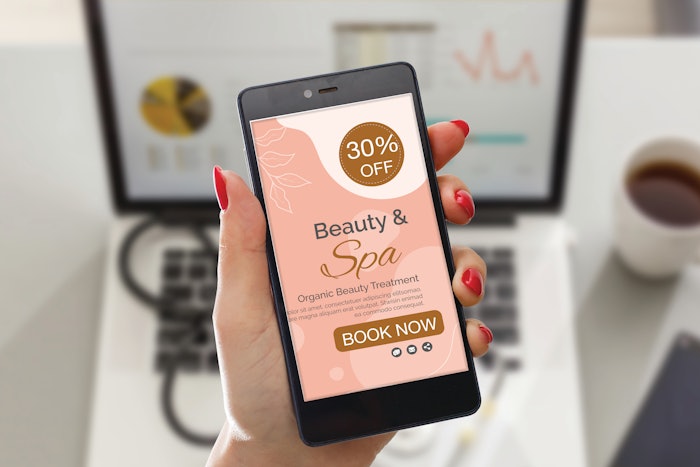
Consumers always seek to improve their health with services, skin care and supplements. According to researchers, the retail industry is expected to exceed $139.9 billion by 2025. The beauty and aesthetics industry is competitive, and aestheticians and spa owners need a marketing plan to keep up with the rapid pace of this growing industry. To stay competitive, having insight into who your ideal clients are is key to not only bringing in new customers but also sustaining long-term client relationships. This article will explore effective marketing strategies to employ in your esthetics practice.
Understanding Your Target Audience
Before employing marketing strategies in your business, it is important to understand and identify your target audience. To identify your target audience, it is best to conduct market research. This process helps you gather and analyze information about your potential customers, including their preferences, buying habits and needs. Research methods include surveys, sales reports, focus groups, and even analytics from your website and social media.
Additionally, you can also research your target audience by conducting a competitive analysis. A competitive analysis will assist you in identifying market gaps, such as understanding what your competitors offer and what they are not offering, and using that data to create a custom service or program to fill market gaps. A competitive analysis can also be used to learn from your competitor’s failures. What marketing insights can you gain from watching the tactics of your direct competition? Additionally, your analysis will also help you examine your potential client's preferences by analyzing your competitor's social media engagement and reviews.
There are various ways to conduct a competitive analysis. There is no right or wrong way to gather information about your competitors and target market. A SWOT analysis is one of the most common ways to analyze not only your competitors but also a way to analyze your own business and its strategies. A SWOT Analysis is an acronym for Strengths, Weaknesses, Opportunities, and Threats. This method will let you see where you stand in relation to the competition and where you can set yourself apart.
1. Leveraging Social Media Marketing
When it comes to marketing, social media marketing has become an important component of any business strategy. Social media has enabled us to connect with our target audience in real time, making it convenient for your company and customers. Social media can assist in building brand awareness, enhancing engagement and fostering client relationships. While social media platforms are constantly evolving and being created, some popular social media platforms include Facebook, Instagram and TikTok. Because of its evolving nature, it is important to stay abreast of any new trends and platforms emerging.
To leverage social media in your marketing plan, there are several strategies to make your brand visible and engage with your audience. Strategy competencies such as a comprehensive content calendar, paid social media advertising, collaborations with influencers, building online communities, and using user-generated content are all significant elements of an effective marketing strategy. Integrating social media into your marketing plan can help you boost awareness, traffic, and business growth.
2. Implementing E-mail Marketing Campaigns
Implementing e-mail marketing campaigns into your overall marketing strategy can assist in building client relationships and ultimately drive business growth. E-mail marketing is a great way to nurture your existing clients and serve as a direct line of communication. E-mail marketing can be used to keep your client's information about upcoming events and promotions and even educational content. To start building your e-mail marketing list, you can start by having your existing clients opt into your e-mail marketing. You can also invite new and potential clients to sign up by offering incentives such as exclusive discounts and VIP access to new services and product launches. Your e-mail marketing campaigns should be personalized and encompass your brand’s voice and overall message.
3. Collaborating with Influencers and Local Businesses
Collaborating with key influencers and local businesses can be a cost-effective addition to your marketing efforts. Implementing this strategy can enhance your brand’s visibility and reach, ultimately assisting in building clientele. Influencer marketing uses the influence of someone with established relationships and credibility within your industry to sell your products or services. Often, influencers are very active on social media platforms and can influence the purchasing habits of their followers. To get started, you should seek to collaborate with influencers who share a similar interest and passion for your industry.
Additionally, cross-promotions with local businesses cannot only expand your reach but also create community engagement and awareness within your community. Like your influencer marketing strategy, you should seek to partner with similar businesses but not in competition with your own business.
4. Utilizing Promotions and Loyalty Programs
Utilizing promotions and loyalty programs is an effective strategy for estheticians and spa owners to attract new clients while improving client retention. Your promotions should be attractive to your clients and prompt them to want to take advantage of the offer. Examples of effective promotions include running a special offer on a new service or celebrating a holiday. It is important to note that your promotions should provide more value than a discount. You should be discounting for the sake of making more income, not for the sake of discounting. Additionally, creating loyalty programs helps attract new clientele by rewarding them for their repeat business. One of the most popular loyalty programs is on a point system, and once the points accrue, the client can redeem them for a percentage off their service or free product.
Make Your Marketing Effective
Effective marketing is key to staying relevant and competitive in today’s beauty and aesthetics marketplace. Market research and competitor analysis let you know who you’re selling to and engage customers more precisely. Social media marketing, email promotions, influencer and local business collaborations can also improve brand awareness and long-term client connections. Additionally, using incentives and reward programs generates recurring sales and increases loyalty. Through these practices, you can set up your company for a lifetime of success and expansion.
Crystal Ngozi is a dynamic speaker, beauty business coach and licensed esthetician with a love for teaching and speaking. With a combined 10 years of experience in the beauty industry and business marketing, Crystal helps beauty professionals scale their businesses and achieve profitability through her signature Business Glow Up Strategy Sessions.crystalngozibeauty.com










